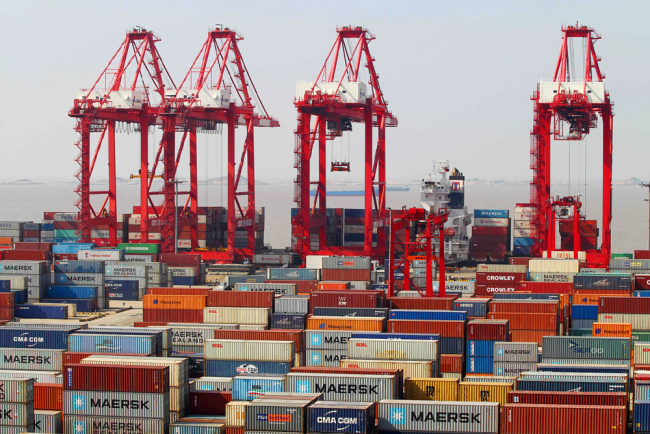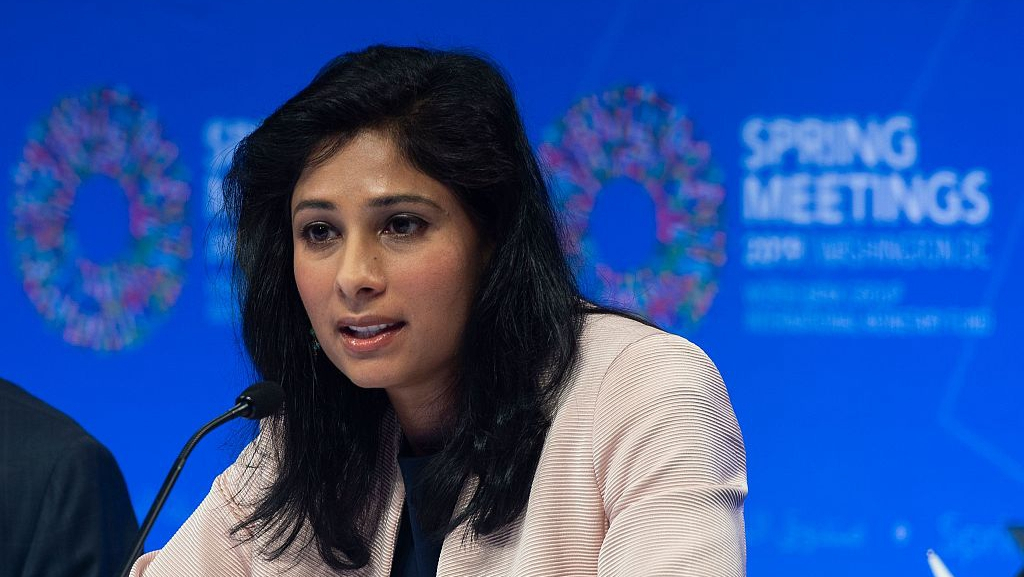
Opinion
22:21, 11-Apr-2019
China remains a driver of growth for a delicate global economy

Editor's note: The following article is taken from the Chinese-language "Commentaries on International Affairs" published in China Plus on April 11, 2019.
China's National Bureau of Statistics said on Thursday that the country's consumer price index (CPI), a measure of price changes in consumer goods and services, was up by 2.3 percent in March compared to the same time a year ago, the largest rise since last October.
And the country's producer price index (PPI), a gauge of producer profitability, rose 0.4 percent, picking up for the first time in nine months. The figures have eased deflation fears and added to the anticipation that the world's second-largest economy is turning a corner.

The Port of Nantong in the city of Nantong, Jiangsu Province. /VCG Photo
The Port of Nantong in the city of Nantong, Jiangsu Province. /VCG Photo
These latest figures come just two days after the International Monetary Fund (IMF) raised its 2019 growth forecast for China by 10 basis points to 6.3 percent. China was the only major economy whose growth rate was revised up by IMF. In comparison, the growth forecast for the United States was trimmed by 20 basis points to 2.3 percent. For the Euro zone, it was cut 30 points to 1.3 percent.
The new figures come at a time the IMF describes as "a delicate moment for the global economy." They provide further evidence that China's economy, with its expanding domestic demand, remains a major engine driving global growth.
Since last year, China's government has introduced new measures to deepen its economic reform and open the country's economy wider to the world. Those include large-scale reductions of taxes and fees for enterprises, a shortened negative list to lower market access barriers for foreign investors, the introduction of a new foreign investment law to treat all businesses equally, revised patent laws to better protect intellectual property rights, and the start of an annual import expo to boost imports to meet domestic demand.

Gita Gopinath, chief economist and director of the research department at the International Monetary Fund (IMF), speaks during a press conference, Washington, DC, April 9, 2019. /VCG Photo
Gita Gopinath, chief economist and director of the research department at the International Monetary Fund (IMF), speaks during a press conference, Washington, DC, April 9, 2019. /VCG Photo
These measures have greatly built up internal and external confidence in China's economic growth. Last year, China's actual utilization of foreign capital reached a record high of almost 135 billion U.S. dollars, up three percent on the previous year. Speaking at the China Development Forum in Beijing last month, Apple CEO Tim Cook said "we are grateful that you have opened your doors and allowed us to be a part of the community here."
Apart from its domestic economic development, China has also played its part in helping boost liquidity while the global economy remains sluggish. Last year, China's overseas investments totaled 130 billion U.S. dollars, staying at the leading position in the world.
China is on its way to meeting the projections of the IMF.
But its growth alone isn't enough for the world economy to fully recover. All countries need to do their bit to promote development, especially when trade protectionism and unilateralism pose an increasing challenge to global growth.
As the IMF has pointed out, there is a need for greater multilateral cooperation to resolve trade conflicts so as to improve the effectiveness of international taxation. Each country needs to develop its own program of fiscal stimulus that, complemented by an accommodating monetary policy, will improve market confidence.
(If you want to contribute and have specific expertise, please contact us at opinions@cgtn.com.)

SITEMAP
Copyright © 2018 CGTN. Beijing ICP prepared NO.16065310-3
Copyright © 2018 CGTN. Beijing ICP prepared NO.16065310-3